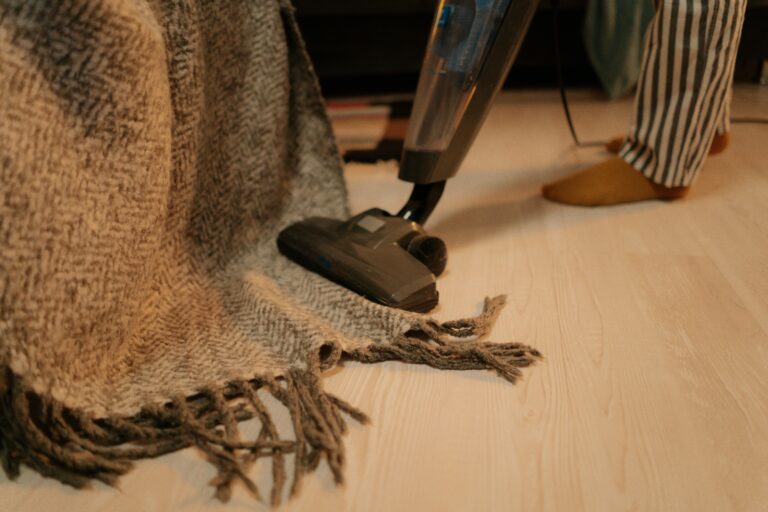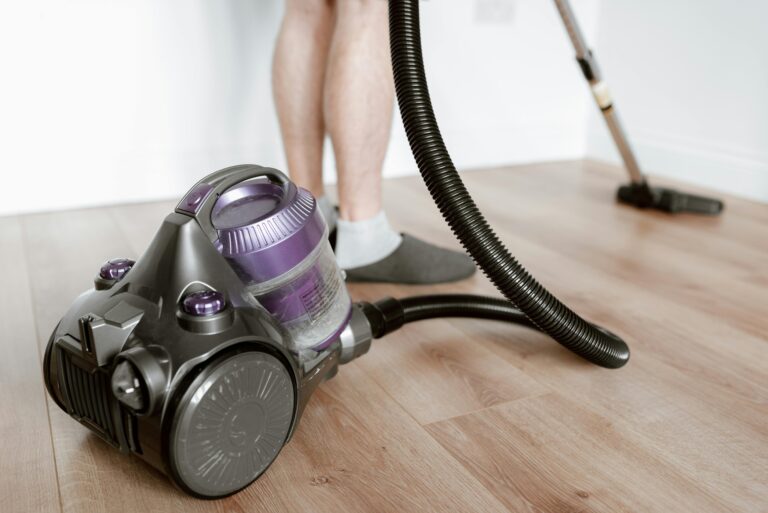Granite countertops are stunning natural stone surfaces that need special care every homeowner wants their granite to look perfect but, stains can quickly ruin the look knowing how to care for your granite is key it’s not just about cleaning. It’s about keeping the stone’s unique look. Removing stains requires the right tools and knowledge.
Removing stains from granite depends on knowing the stain type and using the right cleaning method. Experts suggest specific ways to remove stains without harming the stone. Learning these methods will help keep your granite looking great for years.
In this guide, you’ll learn how to handle different stains and their causes. You’ll also get expert tips on how to remove them. These methods will give you the confidence and skills to tackle any stain on your granite.
Understanding Granite Stains vs. Surface Discoloration
Granite countertops are loved for their beauty and strength. Knowing how they work is key to keeping them looking great. How the stone takes in liquids and stains is all about its porosity.
Not every mark on granite is a stain. Some marks can go away easily. It’s important to know the difference between stains and marks to care for your countertops right.
Identifying True Stains vs. Temporary Marks
Temporary marks happen when:
- Water droplets leave temporary rings
- Condensation creates light surface discoloration
- Moisture quickly evaporates without penetrating the stone
“True stains occur when substances penetrate the granite’s surface, creating lasting discoloration that cannot simply evaporate away.”
Common Causes of Granite Discoloration
Granite can get discolored from different things:
- Oil-based stains from cooking oils
- Water stains from prolonged moisture exposure
- Etching caused by acidic substances
- Mineral deposits from hard water
How Granite Absorbs Stains
The stone’s natural porosity affects how it takes in liquids. Sealed granite usually resists stains, but unsealed or poorly sealed surfaces are more at risk. They can soak up oil-based stains and water.
Knowing these facts helps homeowners keep their granite looking good. It also helps them deal with stains fast and right.
Essential Tools and Materials for Stain Removal
Getting the right granite cleaning supplies is key for removing stains. Experts say to gather specific tools to avoid damaging your granite. These tools are designed to handle tough stains safely.
- pH-neutral cleaners like Dawn Dishwashing Liquid
- Soft microfiber cloths
- Plastic scraper
- Distilled water
- White paper towels
Poultice materials are also vital for stain removal. They soak up tough stains from granite. You can buy professional-grade poultice or make your own with common items.
“The right tools make all the difference in granite stain removal” – Stone Care Professionals
Choose cleaning agents that are pH-neutral. These cleaners clean granite well without harming it. Stay away from acidic or abrasive cleaners that can damage your granite.
- Recommended pH-neutral cleaner characteristics:
- Balanced pH between 6.5-7.5
- Non-abrasive formula
- Specifically designed for natural stone
Investing in good granite cleaning supplies will keep your stone looking great for years. It ensures your granite stays beautiful and durable.
Initial Cleaning Process with pH-Neutral Solutions
Granite surfaces need careful cleaning. Experts say to start gently to remove dirt and prepare for stain treatment. The right cleaning method is key to keeping your granite looking great.
Choosing the Right Cleaning Agent
Choosing the right cleaner is important for your stone. Look for cleaners that are safe for stone and meet these criteria:
- pH-neutral formulation
- No harsh chemicals or abrasives
- Specifically designed for natural stone
“The key to effective granite cleaning is using products that clean without causing microscopic damage to the stone’s surface.”
Step-by-Step Surface Preparation
Effective cleaning involves a step-by-step approach:
- Remove loose debris with a soft microfiber cloth
- Dilute pH-neutral cleaner in warm water
- Use minimal liquid to prevent oversaturation
- Work in small, manageable sections
Proper Rinsing Techniques
| Cleaning Step | Recommended Method |
|---|---|
| Initial Rinse | Clean water, soft cloth |
| Final Rinse | Distilled water for streak-free finish |
| Drying | Soft, lint-free microfiber towel |
Careful rinsing is key to avoiding stains. Always use clean water and dry the surface well to keep your granite looking beautiful.
Removing Stains from Granite: Professional Methods
Removing deep-set granite stains needs special knowledge and tools. Homeowners can use commercial stone poultice products to tackle stubborn stains on their natural stone surfaces.
“The key to successful granite stain removal is understanding the specific type of stain and using targeted professional methods,” says stone restoration expert Mark Thompson.
Experts in stone restoration use advanced techniques that go beyond home cleaning. They apply precise methods and products to remove stains without harming the granite’s surface.
- Identify the specific stain composition
- Select appropriate commercial stone poultice
- Apply professional stain removal techniques
- Use precise extraction methods
| Stain Type | Professional Removal Technique | Recommended Product |
|---|---|---|
| Oil-based stains | Solvent-based poultice application | Granite Deep Clean Poultice |
| Organic stains | Hydrogen peroxide treatment | Professional Stone Cleaner |
| Rust stains | Specialized rust removal poultice | Granite Rust Remover |
Granite surfaces need careful treatment. Professional stain removal techniques are safe and effective. Specialized products deeply clean the stone, removing stubborn stains.

If DIY methods don’t work, it’s time to call a professional. They have the tools and knowledge to fix complex stains without damaging your stone.
Creating an Effective Homemade Poultice
Granite stains can be tough, but a DIY poultice is a strong solution for homeowners. It can remove deep stains without harming the granite.
To make a good baking soda paste, you need to know the right mix and how to apply it. Experts say to make a cleaning solution that gets deep into stains and lifts them up.
Baking Soda Mixture Ratios
Getting the baking soda paste just right is key. Here’s a tried-and-true recipe for your poultice:
- 1/4 cup baking soda
- Hydrogen peroxide or water (enough to make a creamy mix)
- Optional: A few drops of mild dish soap for extra cleaning power
Application Techniques
How you apply the poultice is important for removing stains. Follow these steps:
- Clean the granite well
- Mix the baking soda paste to a thick but spreadable consistency
- Spread it evenly over the stain
- Cover with plastic wrap
- Seal the edges with painter’s tape
Coverage Area Guidelines
| Stain Size | Poultice Layer Thickness | Recommended Coverage |
|---|---|---|
| Small Spot | 1/4 inch | Stain + 1/2 inch border |
| Large Area | 1/4 inch | Full stained section + 1 inch border |
“The secret to removing granite stains is patience and the right technique.” – Stone Care Professional
Let the poultice sit for 24-48 hours, depending on the stain. The baking soda paste will slowly pull out the stain, making your granite look new again.
Professional Poultice Products and Applications
Granite stain removal needs precision and the right tools. Professional-grade stain removers can make a big difference. They help achieve clean surfaces that home remedies can’t.
Choosing the right stain remover is key. Each product targets different stains. This ensures a thorough clean without harming the granite.
- Oil-based stain removal formulations
- Organic matter elimination solutions
- Mineral deposit breakthrough treatments
- Water-based stain extraction products
Experts say to look at several things when picking a poultice:
| Product Criteria | Recommended Attributes |
|---|---|
| Stain Type Compatibility | Specific targeting capability |
| Chemical Composition | Non-abrasive, pH-neutral formula |
| Application Ease | Clear instructions, consistent performance |
| Safety Rating | Low toxicity, granite-surface friendly |
Effective stain removal is about selecting the right tool for the specific challenge your granite surface presents.
Professional-grade stain removers are strong. They go deeper than regular cleaners. Using quality poultice treatments saves time and protects your granite.
The Science Behind Poultice Stain Removal
Removing stains from granite is a complex process. The poultice method uses advanced techniques to pull out deep stains from stone surfaces.
It’s important to know about capillary action for poultice stain removal. This process pulls stains from the stone’s tiny pores.
How Poultice Extracts Stains
Stain removal with poultice involves several scientific steps:
- Molecular attraction between the poultice and stain particles
- Gradual absorption of contaminating substances
- Controlled drying mechanism that lifts stains from stone surfaces
Drying Time and Environmental Dynamics
The success of poultice stain removal depends on the environment. The right drying conditions are key for effective stain removal.
| Environmental Factor | Impact on Stain Removal | Recommended Condition |
|---|---|---|
| Temperature | Accelerates moisture evaporation | 70-80°F |
| Humidity | Influences absorption rate | 40-50% relative humidity |
| Drying Time | Allows complete stain extraction | 24-48 hours |
“The secret to successful stain removal lies in understanding the intricate dance between material science and precise environmental control.” – Stone Restoration Expert
Experts suggest using plastic wrap with tiny holes over the poultice. This slow drying helps remove stains without losing moisture too fast.
Dealing with Stubborn Oil-Based Stains
Grease stains on granite countertops can be tough to remove. They often need a deeper cleaning than just wiping the surface. Spills or greasy food can easily get into the granite’s pores, making them hard to get rid of.
To remove oil stains well, you need a good plan. First, check how deep and old the stain is. New grease stains are easier to clean than old ones that have sunk deep into the stone.
“The key to successful granite stain removal is patience and the right technique.”
- Blot the stain immediately with a clean, soft cloth
- Avoid spreading the grease by wiping, which can expand the stained area
- Use a specialized granite-safe degreasing solution
For tough oil stains, making a poultice can help. The Martha Stewart method uses baking soda or cornstarch to pull out stains from the granite.
Experts say you might need to do this a few times for really stubborn stains. Each time, it helps to slowly pull the oil out of the stone. This way, your granite countertop can be restored carefully and completely.
Preventing Future Granite Stains
To keep your granite countertops looking great, you need to take action. It’s all about understanding how to care for natural stone and using the right techniques.
Granite sealer is key to keeping your countertops in top shape. Experts say you should do more than just clean them. You need a full care plan.
Proper Sealing Techniques
Sealing your granite is like putting up a shield against stains. Here’s how to do it right:
- Clean the surface well before you seal it
- Use a top-notch sealer made for natural stone
- Spread the sealer evenly with a soft cloth or foam
- Let it soak in for the time suggested
- Wipe off any extra sealer with a dry cloth
Daily Maintenance Tips
Keeping up with your granite’s care is crucial. It keeps it looking good and prevents stains. A good maintenance routine can make your countertop last longer.
| Maintenance Action | Frequency | Purpose |
|---|---|---|
| Wipe spills right away | As needed | Stop liquids from soaking in |
| Use a pH-neutral cleaner | Daily | Keep the surface strong |
| Reapply granite sealer | Every 6-12 months | Keep the shield up |
“Prevention is always easier than cure when it comes to natural stone surfaces.” – Stone Care Professional
By following these care tips, you can keep your granite countertops looking amazing. And you’ll protect your investment for many years.

When to Call Professional Stone Specialists
Granite surfaces can be tricky to clean. When DIY methods don’t work, it’s time to call the pros. They have the skills to fix stains and damage.
“Not all granite stains are created equal. Some require specialized knowledge and professional intervention.”
Professional cleaners know how to tackle tough stains. Knowing when to ask for help can save your granite.
- Deep-set stains that resist home treatments
- Chemical etching or significant discoloration
- Structural damage to granite surface
- Recurring stain problems
Experts use special tools and methods that homeowners can’t. They know how to fix granite right.
| Scenario | Professional Intervention Needed |
|---|---|
| Oil-based stains | Advanced chemical extraction techniques |
| Etched surfaces | Specialized polishing and refinishing |
| Deep structural damage | Comprehensive surface reconstruction |
Getting professional help can save you money and keep your granite looking good. Experts give your stone the care it needs.
While you can handle some stains, big problems need a pro. Experts give you peace of mind and results you can count on.
Common Mistakes to Avoid in Granite Stain Removal
Granite countertops need careful care to keep them looking great and lasting long. Homeowners often make big mistakes when trying to get rid of stains. These mistakes can harm the stone for good.
“Prevention is always easier than correction when it comes to granite care.” – Stone Care Professionals
Granite is sensitive to harsh chemicals and rough cleaners. Knowing what not to do can help keep your stone looking new.
- Avoid using harsh chemicals that can etch or discolor the granite surface
- Never use improper techniques like scraping or excessive scrubbing
- Steer clear of acidic cleaners that can break down stone sealants
- Prevent direct contact with potential staining agents
Using the wrong methods can really hurt your granite. It needs special care to stay beautiful and strong.
| Mistake | Potential Damage | Recommended Action |
|---|---|---|
| Using bleach or ammonia | Surface etching | Use pH-neutral stone cleaners |
| Aggressive scrubbing | Surface scratching | Gentle cleaning with soft cloths |
| Ignoring spills | Permanent staining | Immediate blotting and cleaning |
Experts say to test any cleaner on a small area first. This simple step can stop big damage from bad cleaners or wrong ways to clean.
Best cordless dyson for pet hair Review
Conclusion
Maintaining stain-free surfaces is key to keeping granite looking great. Knowing how to care for natural stone is crucial. This way, your granite countertops and surfaces will stay beautiful for many years.
Good stone care goes beyond just cleaning up spills. It’s about preventing stains from happening in the first place. This means acting fast when spills happen, sealing your granite regularly, and using gentle cleaners. Experts say sticking to a routine is the best way to keep your granite looking amazing.
Every granite surface has its own story. Some stains need special treatments, while others can be handled with everyday care. Learning how to properly maintain your granite is what keeps it looking good and lasting long.
By following the tips in this guide, you’ll be ready to handle any stain. Your granite surfaces will stay in top condition, impressing everyone who sees them.
FAQ
What is the difference between a granite stain and surface discoloration?
A true granite stain happens when something like a liquid gets into the stone and changes its color. On the other hand, surface discolorations like water rings go away when the liquid dries. Stains need special cleaning, but surface marks usually fade on their own.
What materials do I need to remove a granite stain?
You’ll need pH-neutral cleaners like Dawn Dishwashing Liquid, baking soda, plastic wrap, a plastic scraper, and sometimes, commercial poultice products. These tools help clean stains without harming the granite.
How do I create a homemade poultice for stain removal?
Mix 1/4 cup of baking soda with enough water to make a paste. Spread it over the stain, making sure it’s a bit bigger than the stain itself. Cover it with plastic wrap, seal the edges, and let it dry for 24 to 48 hours.
Can all granite stains be removed at home?
Many stains can be tackled with DIY methods. But, some tough stains might need a pro. If DIY doesn’t work, it’s best to get help from a stone expert.
How can I prevent granite stains in the future?
Sealing your granite regularly helps keep it from getting stains. Clean spills right away and use gentle cleaners. Stay away from harsh chemicals and do regular maintenance to keep your granite looking good.
Are commercial poultice products better than homemade solutions?
Commercial poultice products might be better for tough stains because they’re made for specific types of stains. But, a homemade baking soda poultice works well for many common stains.
How long does the poultice method take to remove a stain?
The poultice method usually takes 24 to 48 hours to work best. It pulls the stain out of the stone as it dries. Oil-based stains might need more than one treatment.
What should I avoid when cleaning granite surfaces?
Don’t use harsh chemicals, abrasive cleaners, or acidic stuff that can damage the granite. Always test cleaners on a small area first. Stick to pH-neutral cleaners to be safe.



